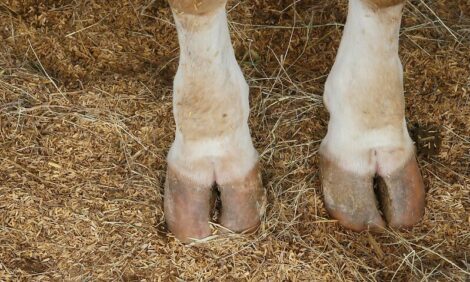



War in Ukraine adds to ongoing pressure in EU pork market - Rabobank
Feed market supply disruptions add pressureSince the European pork market faced oversupply in 2021, low carcass prices have put pressure on farm margins, while increased labour, energy, and freight costs have weighed on processor margins, according to an in-depth report from Rabobank.
The margin squeeze has worsened since Russia invaded Ukraine. Over the next six months, we expect margin pressure to persist. And as the market attempts to rebalance production and consumption, the next few years will be challenging for many in the pork supply chain, said the report.
Europe’s feed market is directly impacted by supply disruptions in the Black Sea Region and the increased prices for feed commodities due to the war in Ukraine. The EU is particularly dependent on Ukrainian corn, with 45% of EU corn imports coming from Ukraine in 2021, i.e. 18m metric tons. Spain is the country most dependent on corn from Ukraine (2.5m metric tons in 2021, or 29% of total corn imports), followed by Netherlands (2.3m metric tons, 44% of total corn imports), Italy (0.8m metric tons, 15% of total corn imports), and Belgium (0.6m metric tons, 34% of total corn imports).
Although European wheat imports from Ukraine are limited, the loss of Russian and Ukrainian wheat exports adds further pressure to the already stressed global feed commodity balance sheets. Feed commodity prices are expected to remain elevated into mid-2023, keeping the cost of this key pig production input high and significantly increasing the cost price for pig farmers.
Dutch farmers do not break even at current or expected price
In the Netherlands, considering the increase in feed and energy costs, piglet prices should reach €68 per piglet in order for sow farmers to break even. At the beginning of Q2, the average piglet price increased to €60 per piglet, however that price level was not maintained (see Figure 2). After the peak in week 13, the price gradually dropped to EUR 39/kg piglet in week 20. We did see piglet prices around the current break-even level in the summer of 2019 and from end 2019 through 1H 2020. However, the demand situation was very different from that of today as China’s pork imports had hit a record high at the time. There is little chance that the piglet price will reach break-even levels in 2022, while supply is expected to contract across Europe.
Production costs are expected to increase not only in the Netherlands, but also in other major pork producing countries. Spain has structurally higher feed costs compared to other major pork producers in Europe due to inefficiencies in its logistical infrastructure. Despite the relatively larger impact of increasing feed costs on Spanish pork production, we expect Spain to maintain its cost advantage.
Should the sow farmer break even, the cost price for fattening pigs would be 38% higher in Q2 2022 compared to Q1 2022 (see Figure 3). To cover all costs for fattening farms, the carcass price would have to be EUR 205 per 100kg carcass. As carcass prices have remained below this level even during the period of high demand in 2019 and 2020, it seems highly unlikely that this break-even level will be reached in 2022 (see Figure 4). The average pig carcass price in week 20, for example, was only EUR 158 per 100kg carcass in the Netherlands. Therefore, the margins of fatteners are also under pressure, even considering that piglet prices are currently below the break-even level. Of course, margin pressure can vary across farms. Farmers who use cost-plus pricing models are better able to manage higher costs.
Production costs are expected to increase not only in the Netherlands, but also in other major pork producing countries. Spain has structurally higher feed costs compared to other major pork producers in Europe due to inefficiencies in its logistical infrastructure. Despite the relatively larger impact of increasing feed costs on Spanish pork production, we expect Spain to maintain its cost advantage.
German pig farmers are less dependent on imports of feed commodities from Ukraine. In Germany pig farms often have large areas of land dedicated to feed production. Production of their own feed can help mitigate the increase in production costs. However, this may also encourage farmers to cease pig production and focus on selling their crops on the commodity market, as German pig prices are relatively low.
For margins to improve balance must be restored
Piglet and carcass prices have a high supply and demand sensitivity as the market attempts to rebalance and reduce oversupply. EU27+UK pork production contracted by 2.5% YTD in February 2022. However, on the demand side, EU27+UK exports were also down by 30% YTD in March 2022 (439,000 metric tons) compared to same period last year, with volumes to China declining by 60% YTD.
China’s import demand is expected to fall by over 20% in 2022. With imports for YTD April 55% below the same period in 2021, we expect that demand will pick up in 2H 2022. Hence, supply in Europe will need to contract to restore margins. Government interventions and market subsidies for pig farming can have adverse effects. As these can lead to farms that are less economically viable remaining in the market, causing pressure on margins to persist only longer.
Assuming that EU27+UK exports decline to 3.5m metric tons over the next two to three years and that domestic consumption remains at 2021 levels, pork production should contract by 6% compared to 2021. In case consumption drops by 2.5% compared to 2021, EU27+UK pork production would need to decline by 8%. For 2022, we expect EU27+UK pork production to decline by at least 2% YOY, driven by a sharp contraction in Germany.








